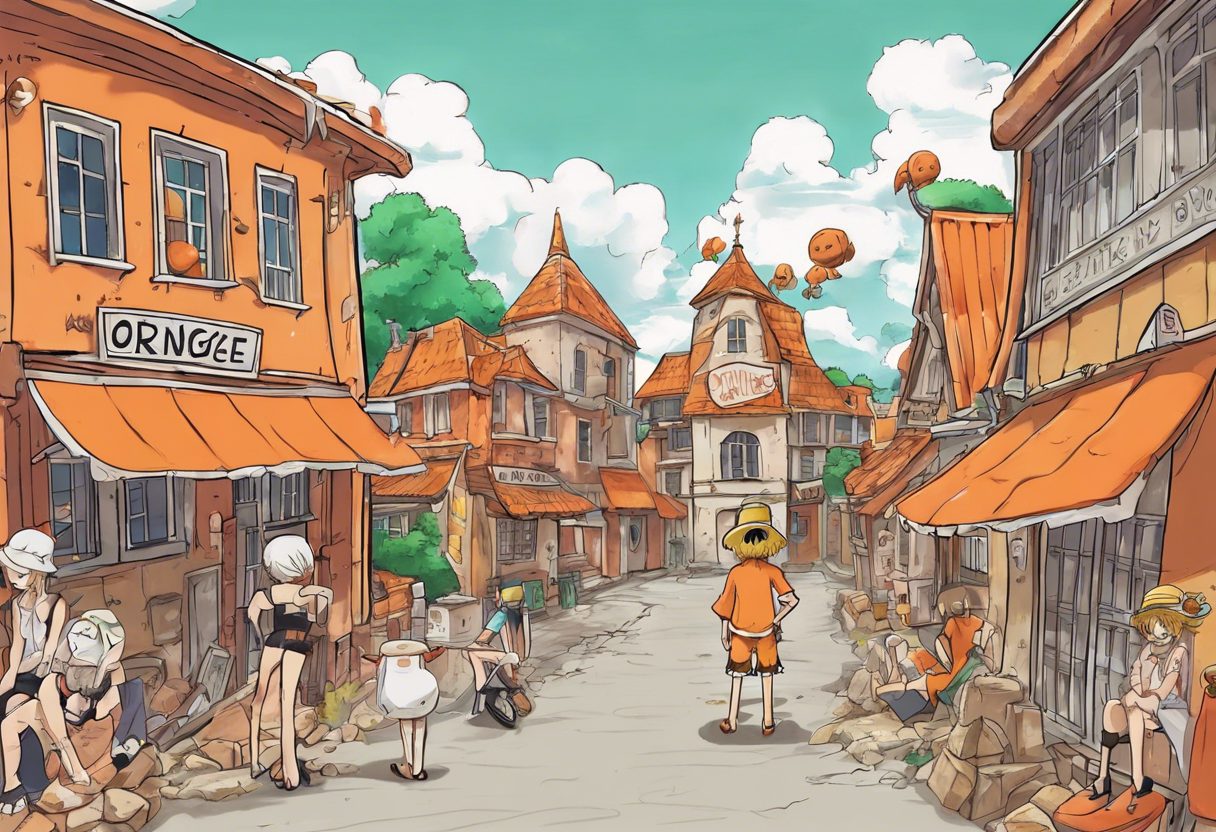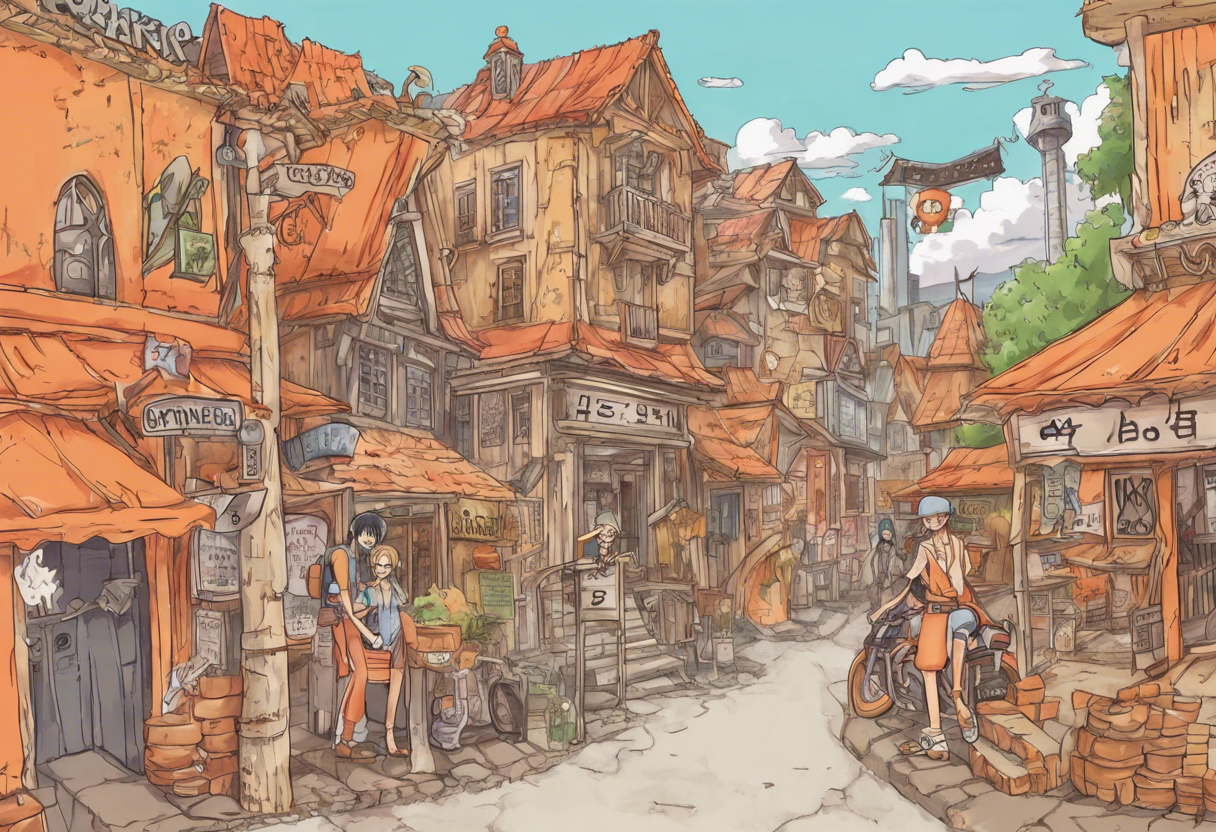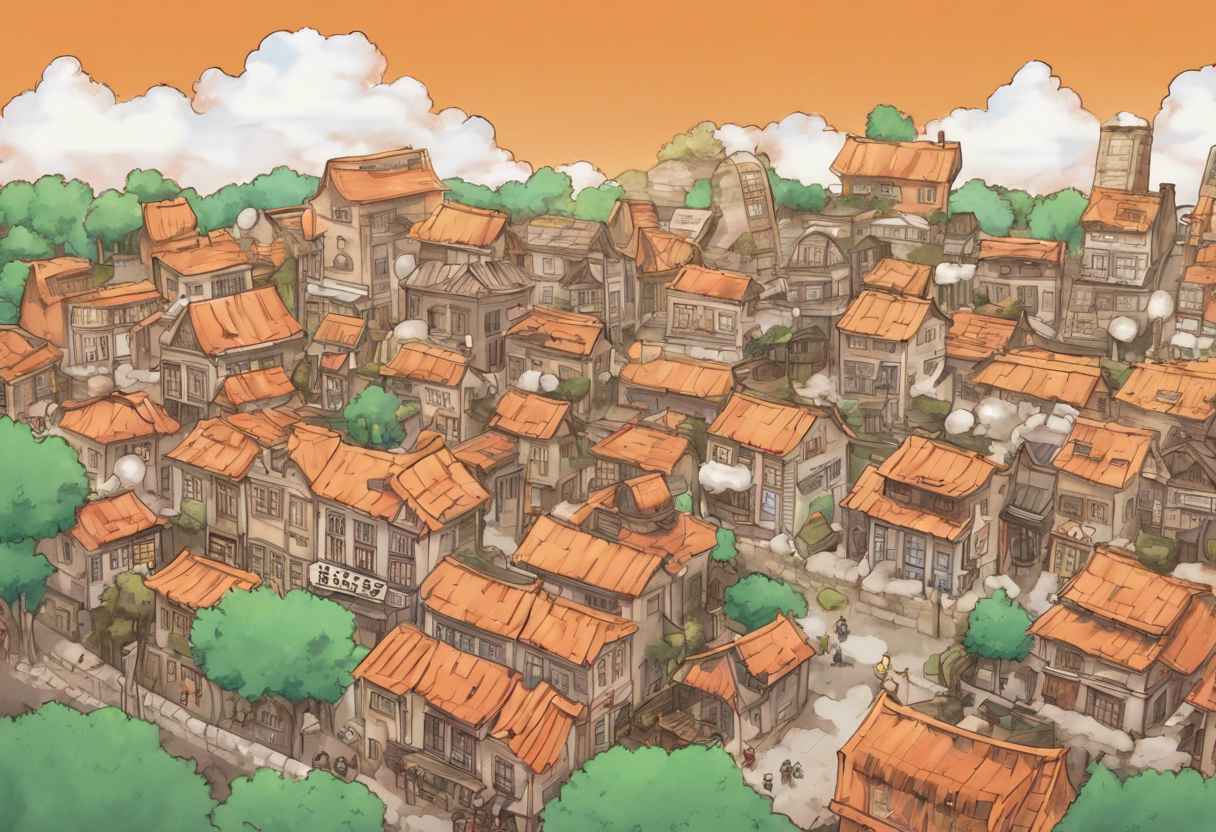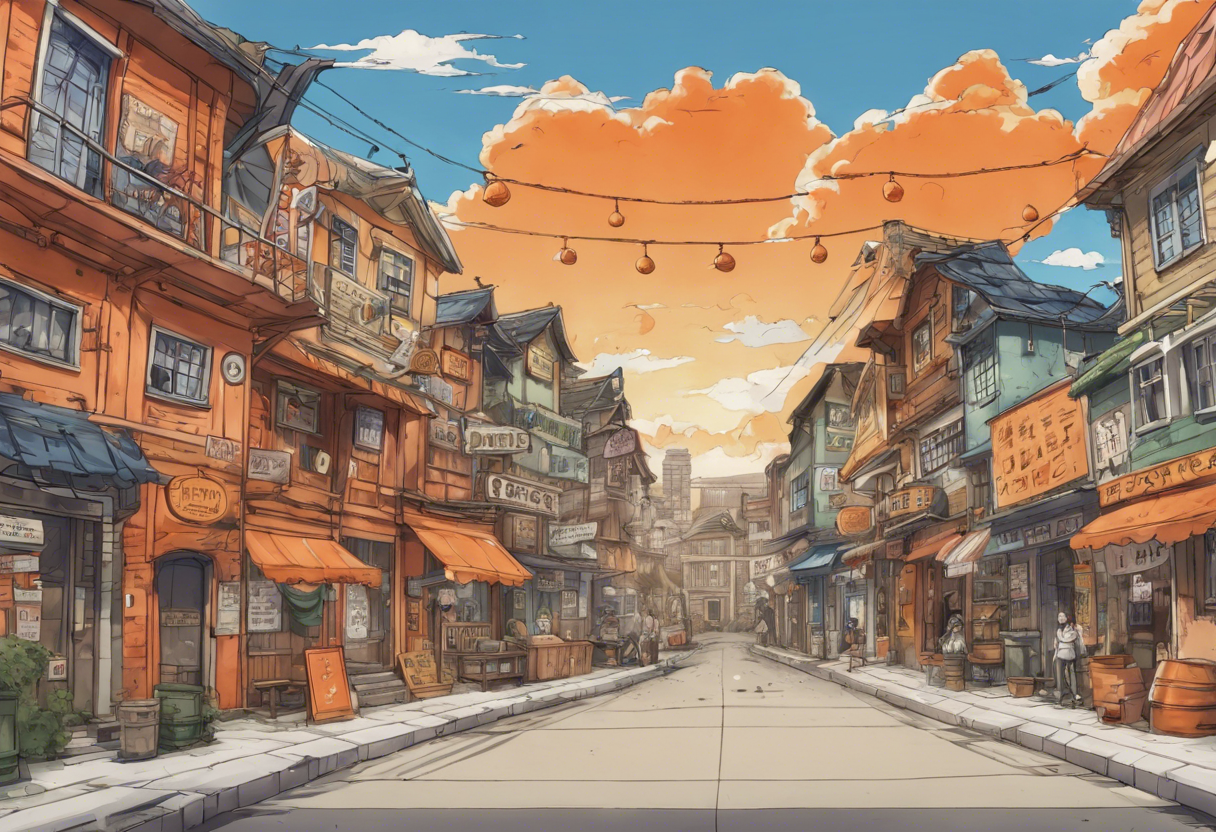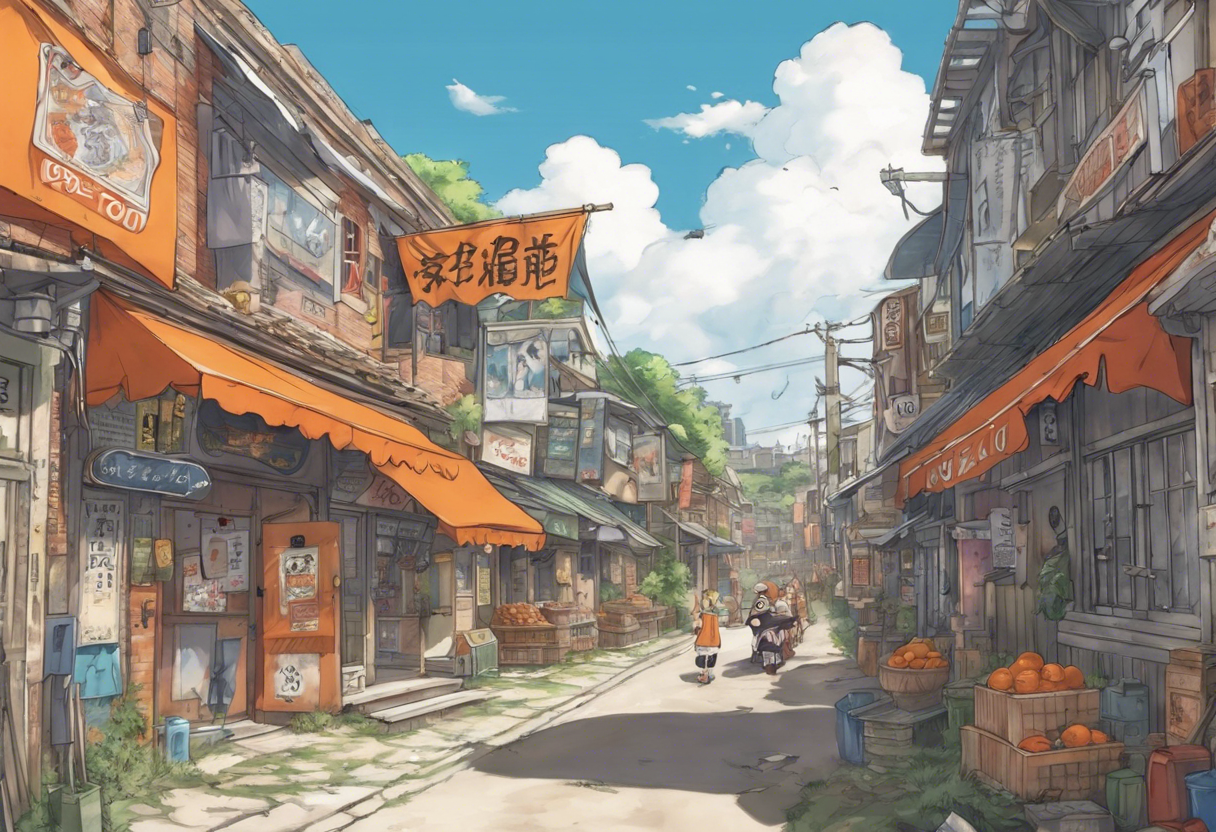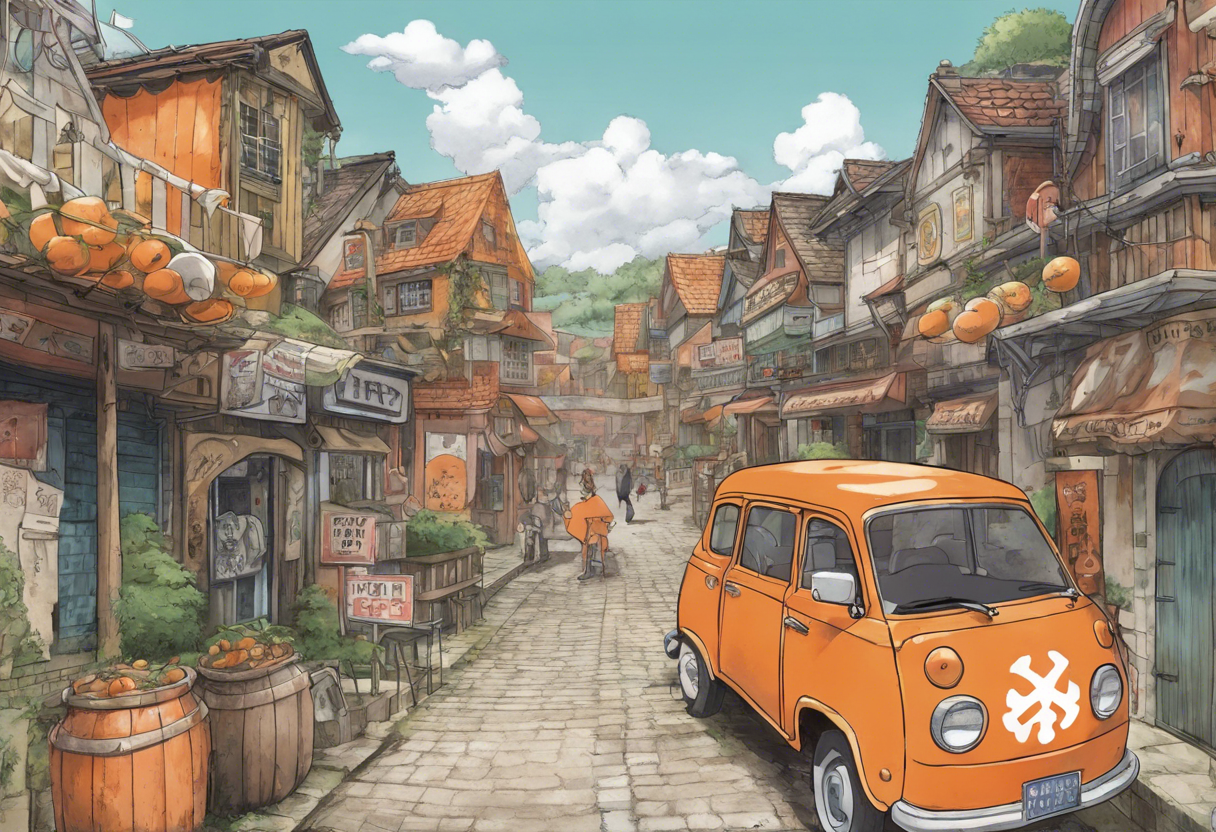Contents
Orange Town in One Piece: A Detailed Analysis
Introduction
Orange Town is a pivotal location in the popular manga and anime series One Piece, created by Eiichiro Oda. It is part of the East Blue Saga, specifically within the Orange Town Arc, which marks the second story arc of the series. This arc spans over five chapters of the manga and four to five episodes of the anime.
Orange Town was introduced in Episode 4 of the anime and Chapter 8 of the manga, serving as a crucial early storyline that sets the stage for the broader themes and character developments in One Piece. The arc is notable for its introduction of key characters, world-building elements, and the unique blend of humor, action, and adventure that characterizes Oda’s work.
The production of One Piece, including the Orange Town Arc, is overseen by Toei Animation, with Eiichiro Oda as the original creator and writer. The director for the early episodes, including the Orange Town Arc, was Konosuke Uda, who played a significant role in bringing Oda’s vision to life.
What sets Orange Town apart is its role in introducing Nami, a central character in the series, and in expanding the One Piece world by revealing the mysterious abilities of Devil Fruits and the allure of the Grand Line.
Plot Summary
Orange Town is a colonial-style town located on Organ Island in the East Blue region. The town was founded by a group of people who had lost their previous home to a pirate attack forty-two years prior to the events of the arc. Boddle, the mayor and one of the founders, led the townspeople in rebuilding their lives.
The storyline begins with Monkey D. Luffy and his crew, including Roronoa Zoro, arriving in Orange Town. Here, they encounter Nami, who has been chased by Buggy the Clown and his crew. Nami, with her expertise in navigation and thievery, had stolen Buggy’s treasure map and was seeking to steal more from him.
Buggy, who possesses the Chop Chop Fruit (Bara Bara no Mi), allowing him to separate his body parts, takes over Orange Town, forcing the residents to flee to a nearby refuge. Luffy, Zoro, and Nami form an alliance to defeat Buggy and his crew. During this arc, they meet Chouchou, a dog who guards his late master’s pet food shop, and Boddle, who is determined to protect his town.
Key events include the destruction of the pet food shop by Mohji, Buggy’s first mate, and the subsequent battle between Luffy and Buggy. Luffy and his crew manage to defeat Buggy and his crew, but not before significant parts of the town are destroyed. In the aftermath, Luffy leaves behind 500,000 berries to help the townspeople rebuild their town[1][2].
Themes and Symbolism
The Orange Town Arc is rich in themes that are central to the One Piece series. One of the primary themes is the importance of friendship and trust. The bond between Luffy, Zoro, and Nami begins to form during their adventures in Orange Town, showcasing how they rely on each other to overcome challenges.
Another significant theme is the pursuit of dreams and the courage to stand up against adversity. Luffy’s determination to protect the town and its people, despite being misunderstood by them, highlights his unwavering commitment to justice and his dream of becoming the Pirate King.
The arc also introduces the concept of Devil Fruits, which symbolize the unique powers and abilities that characters can possess. Buggy’s Chop Chop Fruit serves as a metaphor for the versatility and unpredictability of these powers, adding a layer of complexity to the One Piece world[1][2].
Cultural Impact
The Orange Town Arc has had a notable impact on the One Piece fandom and broader pop culture. It marked one of the early significant storylines that captured the hearts of audiences, introducing key characters and themes that would become staples of the series.
Upon its release, the arc received positive feedback for its blend of action, humor, and emotional depth. It helped establish One Piece as a series that could balance light-hearted moments with serious storytelling, appealing to a wide range of viewers.
The arc’s influence can be seen in various adaptations and references in other media. For example, the character dynamics and the introduction of Devil Fruits have been referenced in fan art, cosplay, and fan fiction. The arc’s themes of friendship and perseverance have also resonated with audiences, making it a memorable part of the One Piece narrative[2][5].
Critical Reception
The Orange Town Arc was well-received by both critics and audiences. Critics praised the arc for its solid storytelling, character development, and the introduction of key themes that would be explored further in the series.
The arc was noted for its pacing, with some critics feeling that certain parts may feel slightly slow, but overall, it was seen as a solid addition to the One Piece saga. The introduction of Nami and the expansion of the One Piece world through the concept of Devil Fruits were particularly highlighted as strengths[2].
Audiences appreciated the arc for its emotional depth, particularly in the interactions between Luffy, Zoro, Nami, and the townspeople. The arc’s conclusion, where Luffy leaves behind treasure to help the town rebuild, was seen as a heartwarming moment that underscored Luffy’s character.
There have been no major controversies surrounding the Orange Town Arc, but differing interpretations have emerged regarding the portrayal of certain characters and the themes explored. However, these interpretations have generally enriched the discussion around the series rather than detracting from it[1][2].
Legacy
The Orange Town Arc has left a lasting legacy in the One Piece series and beyond. It continues to be remembered fondly by fans as one of the early arcs that set the tone for the series’ blend of adventure, humor, and heart.
The arc’s influence can be seen in later storylines and character developments. The themes of friendship, trust, and the pursuit of dreams introduced in Orange Town continue to be central to the series, inspiring new generations of fans.
For filmmakers and artists, the Orange Town Arc serves as an example of how to balance action, humor, and emotional depth in storytelling. The arc’s use of symbolic elements, such as the Devil Fruits, has also inspired creative works in other genres.
In cinematic history, the Orange Town Arc is a significant part of the One Piece saga, marking an early milestone in the series’ journey to becoming one of the most beloved and enduring anime franchises.
References
- https://wiki.sportskeeda.com/one-piece/orange-town-in-one-piece
- https://poggers.com/blogs/anime/one-piece-orange-town-arc-summary-recap-review
- https://gamerant.com/theme-every-major-one-piece-arc/
- https://theorangecurtainrev.com/our-town-south-coast-repertory-review/
- https://en.wikipedia.org/wiki/List_of_One_Piece_story_arcs

